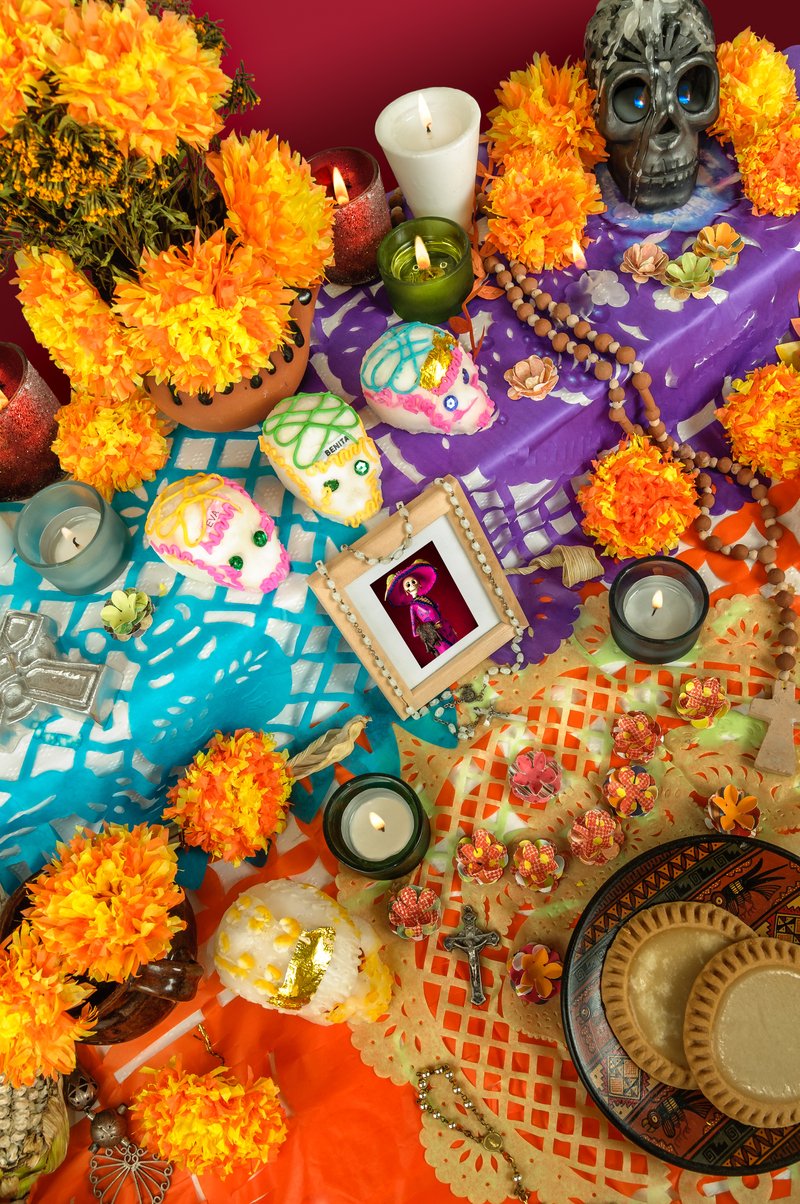Red Roses, Love, and Tradition: Why They Bloom on Valentine's
Posted on 23/08/2025
Red Roses, Love, and Tradition: Why They Bloom on Valentine's
Red roses have become an unmistakable symbol of love, especially when Valentine's Day approaches. Every year, millions of bouquets are exchanged worldwide as a gesture of affection, devotion, and admiration. But why exactly do red roses dominate Valentine's Day? What is the deep-rooted tradition behind this fragrant bloom, and how did it become the global language of romance? In this article, we explore the history, meaning, and cultural significance of red roses in connection with love and Valentine's Day.
Red Roses and Valentine's Day: An Enduring Romance
The relationship between red roses and Valentine's Day isn't just a modern marketing strategy. It's a tradition intertwined with centuries of symbolism, myth, and real-life romance.
The Universal Symbolism of Red Roses
- Passionate Love: The color red universally represents deep passion and burning affection. Red roses are considered the ultimate floral embodiment of true love.
- Beauty: With their velvety petals and captivating fragrance, red roses symbolize not just love, but also the admiration of someone's beauty, making them ideal for expressions of romance.
- Respect and Courage: Historically, red roses have been linked to respect, courage, and admiration--characteristics often found in the deepest romantic bonds.
When you gift a bouquet of red roses, you're not merely offering beautiful flowers; you're conveying powerful, age-old messages without saying a word. That's what makes them the traditional flower of Valentine's Day.

The Fascinating History of Red Roses as Love's Emissary
Ancient Origins
According to myth, red roses were intrinsically linked to the gods and goddesses of love:
- Greek Mythology: The red rose is associated with Aphrodite, goddess of love. Legend tells that the first red rose grew from her tears and the blood of her lover, Adonis, symbolizing eternal love and loss.
- Roman Lore: The Romans borrowed the symbolism, linking red roses to Venus, their own version of the love goddess, who was often depicted adorned with roses.
Medieval and Renaissance Symbolism
During the Middle Ages and Renaissance, red roses became more popular in poetry, art, and courtly love. They were:
- Exchanged as secret signals between lovers.
- Celebrated in literature as the purest emblem of passionate love.
- Used as motifs in chivalric and romantic art.
Red roses' association with the heart and emotions continued to blossom throughout these eras, further anchoring their reputation as the "flower of true love."
Victorian Language of Flowers
In the 19th century, during the Victorian era, the Language of Flowers (floriography) became wildly popular. People expressed feelings they could not speak aloud using flower arrangements. In this coded language:
- One red rose meant "I love you."
- A dozen red roses symbolized gratitude and deep devotion.
- Red rosebuds represented first love and innocence.
This era solidified the tradition of giving red roses as tokens of romantic affection.
Red Roses and Valentine's Day: A Blossoming Tradition
The Origins of Valentine's Day
Valentine's Day itself traces its roots to both Christian and Roman traditions. February 14th was dedicated to Saint Valentine, a priest who allegedly defied an emperor's orders and secretly married couples to spare husbands from war. The association with love and romance only intensified over the centuries, especially as February came to be seen as the beginning of the birds' mating season in Europe.
Commercialization and the Role of Red Roses
The 19th and 20th centuries witnessed Valentine's Day transform into a commercial holiday, with greeting cards, chocolates, and of course, flower bouquets becoming popular gifts. Red roses, thanks to their established symbolism, naturally rose to the top as the signature Valentine's Day flower. Today, more red roses are sold and delivered on Valentine's Day than for any other event in the year.
Why Do We Give Red Roses on Valentine's Day?
So, why do couples the world over continue to exchange red roses on Valentine's?
- Symbolic Meaning: They represent the profound feelings that are often difficult to express with words alone.
- Tradition: Exchanging red roses is a timeless ritual that connects modern lovers to centuries of romantic history.
- Universality: While other flowers have meaning, the message of red roses as love's token is understood globally.
- Emotional Impact: The act of giving or receiving red roses can create powerful, lasting emotional memories for couples.
How Red Roses Became the Language of Love
Global Traditions Involving Red Roses
Red roses are not just popular in the Western world. From India to Japan, and across continents, people use red roses to speak the universal dialect of love. The flower is often featured in:
- Weddings and engagements
- Anniversaries
- Proposals
- Festivals celebrating love and new beginnings
In each culture, giving red roses carries the unspoken promise of enduring romance and deep affection.
Modern Expressions: Beyond Valentine's Day
Today, red roses aren't limited to romantic holidays. They play a pivotal role in:
- Mother's Day, expressing gratitude and appreciation
- Birthdays, symbolizing admiration
- Graduations, to celebrate achievement
- Funerals or Memorials, signifying respect and remembrance
Yet, it is on Valentine's Day that their presence is most iconic and meaningful.
The Different Shades of Love: Red Rose Varieties and Their Meanings
The Spectrum of Red Roses
Not all red roses are exactly alike. Different shades and bloom types can have subtle differences in meaning. Explore some popular red rose varieties and their unique symbolism:
- Crimson Red Roses: Deep, velvety red symbolizes intense passion and desire.
- Bright Red Roses: Classic love, respect, and admiration.
- Cherry Red Roses: Playful, youthful affection.
- Dark Red Roses: Unconscious beauty and a love that goes beyond words.
These variations allow couples to express nuances of their feelings on Valentine's Day and other romantic occasions.
The Timeless Appeal of Red Roses: Science and Sentiment
The Science Behind the Scent
A part of the red rose's irresistible charm is their fragrance. Research shows that the scent of roses can:
- Reduce stress and promote feelings of relaxation, making intimate moments even more special.
- Evokes strong emotional memories, reinforcing bonds between lovers.
Visual Impact and Beauty
The lush, symmetrical petals and rich color of red roses appeal to our innate sense of beauty. It's no wonder that nature designed them as a perfect messenger for love's most powerful emotions.
Tips for Gifting Red Roses on Valentine's Day
If you want to follow tradition and charm your partner with a bouquet this Valentine's, keep these expert tips in mind!
- Quality Over Quantity: Sometimes, a single long-stemmed red rose, beautifully presented, can be more meaningful than an entire bouquet.
- Personalize Your Gift: Add a handwritten note or pair red roses with your partner's favorite treat to enhance the romantic gesture.
- Consider Presentation: Elegant wrappings or a keepsake vase can turn a simple bouquet into a treasured memory.
- Timing Matters: Surprise your loved one by arranging for roses to arrive at an unexpected moment, not just on the day itself.
Remember, the true magic lies in the thoughtfulness and intention behind the gesture.
Beyond Romance: Red Roses in Modern Pop Culture
Red Roses in Literature and Art
Throughout history, red roses have inspired poets, painters, and writers. From Shakespeare's immortal lines "A rose by any other name would smell as sweet" to passionate love songs and contemporary films, they remain a creative muse and symbol of timeless romance.
Red Roses in Social Media and Digital Age
Red roses have gone digital--appearing in emojis, memes, and heartfelt online messages. The classic red rose emoji (?) has become the shorthand for admiration and love on platforms like Instagram and Facebook, proving that even in the fast-paced digital world, their meaning endures.

Frequently Asked Questions About Red Roses and Valentine's Day
Are there meaningful alternatives to red roses on Valentine's Day?
While red roses are a classic, other flowers also convey love, such as tulips, lilies, or peonies. However, none have the same historic and universal association with romance as the red rose.
What does the number of red roses given signify?
- 1 Rose: Love at first sight.
- 12 Roses: Complete devotion and gratitude.
- 24 Roses: "I'm yours."
- 50 Roses: Unconditional love.
How can I make my rose bouquet last longer?
- Trim the stems diagonally before placing them in water.
- Use fresh, cool water and change it every two days.
- Keep the bouquet away from direct sunlight and heat.
- Remove any leaves below the water line to prevent bacterial growth.
Conclusion: Why Red Roses Will Always Bloom on Valentine's
Red roses aren't merely flowers - they're a living, breathing tradition of love, passion, and beauty. On Valentine's Day, when words often fall short, these blooms speak volumes. Whether rooted in ancient mythology, Victorian etiquette, or modern pop culture, their significance remains undiminished.
As long as humans seek to express heartfelt emotion, red roses will continue to bloom on Valentine's, binding lovers with a tradition that transcends time, language, and culture. When you next hold a red rose, remember: you're part of an age-old story--one that keeps love blossoming, year after year.
Latest Posts
Peony Flowers: Delving into Their Colorful and Symbolic Essence
Red Roses, Love, and Tradition: Why They Bloom on Valentine's
Delve Into the Enigma: 7 Unfamiliar Tulip Facts
Explore the Message Behind Your Birth Flower and What It Imparts About You





